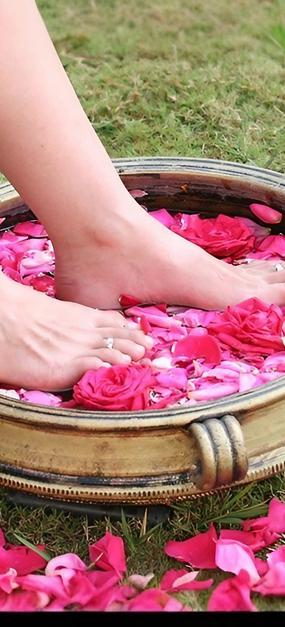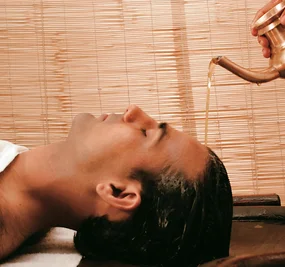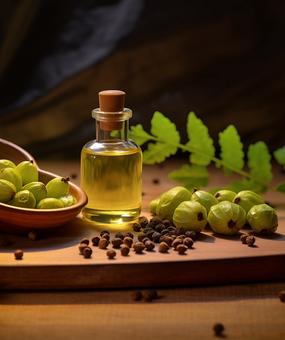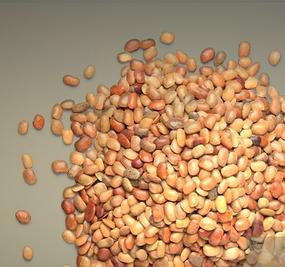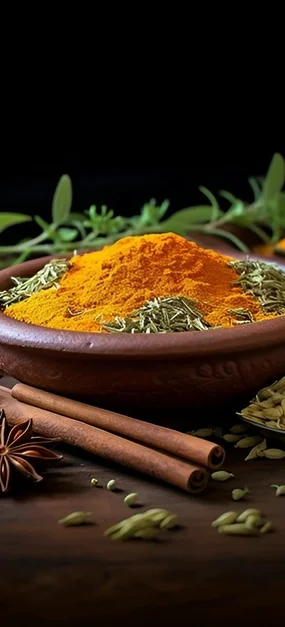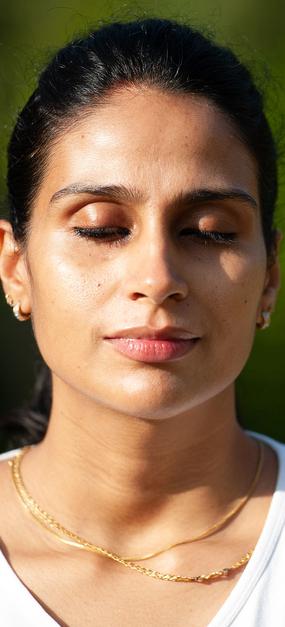You have added it in festival pachadis (side dishes made of sundry ingredients that are pounded together) and rasam (tamarind-based soup-like dish eaten with rice). Or dabbed the oil on your skin to get rid of acne. You might have found its dried leaves in wardrobes used to repel insects or seen people apply its leaves on the forehead of a sick person. Perhaps you drank a concoction with this ingredient yourself to cure your illness!
Yes, we are talking about neem: the multifaceted and versatile tree! Clearly, there are so many uses of neem. Each of its parts has some utility: the leaves, bark, oil, flowers, and seeds. This sacred tree is much revered for its medicinal properties and has been used to treat various ailments since prehistoric times. According to research, neem is the first-mentioned medicinal plant in the Siddha medical system believed to be about 10,000 years old.
So, let’s find out more about this neem tree along with the medicinal benefits of various parts and forms – neem bark, powder, leaves, and oil.
What is neem?
Neem is a member of the mahogany family, Meliaceae. The scientific name of neem is Azadirachta indica.
This Latinized name comes from the Persian words: ‘Azad’ meaning ‘free’, ‘dirakht’ meaning ‘tree’, and ‘i-Hind’ meaning ‘of Indian origin’.
So, this word means the ‘free tree of India’.
This evergreen tree grows to a height ranging from about 50 to 120 feet. The special feature of this tree is that it can grow in arid regions with little rainfall. So, its ability to withstand drought makes it ideal for the world we live in today.
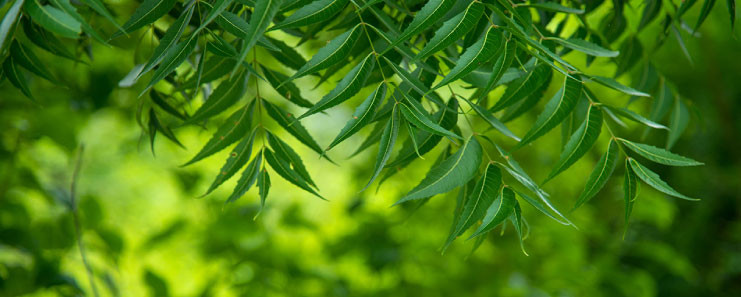
Where is neem cultivated?
Neem is mainly cultivated in the tropical climate of the Indian subcontinent – India, Pakistan, Nepal, Sri Lanka, and Bangladesh.
Uses of neem
Different parts of the neem tree are used in several Ayurvedic remedies. In particular, the bark, powder, leaves, and oil are tremendously useful, and hence popular. Let’s explore the uses of different parts and extracts from the neem tree.
I. Uses of the bark
A) The bark of the neem tree has antiseptic and astringent properties, which helps heal wounds.
B) Extracts made from neem bark have antioxidant properties.
C) It also acts as a coolant.
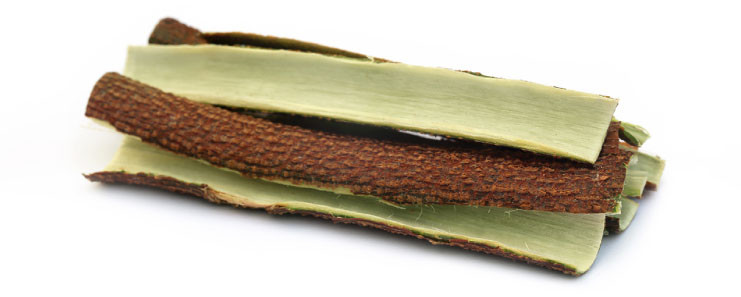
It is used to
- ward off tiredness
- treat worms
- control fever
- treat loss of appetite
- clean teeth
- balance the Kapha constitution
How to use it:
- Traditionally, people would just snap off a twig of the neem tree and chew on it; it prevents bleeding gums, tooth decay, and bad breath.
- The bark of the neem is also crushed and ground to make neem powder.
II. Uses of neem powder
A) Neem powder is used in mouthwash products
B) It helps you deal with stomach upsets.
C) It helps boost your immune system
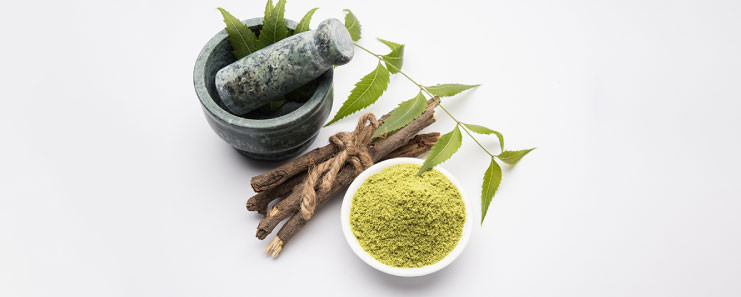
How to use it: Add neem powder to boiling water. Keep overnight. Allow the mixture to steep for 2 days. Strain the liquid and use it in a diluted state for mouthwash. This was India’s ancient remedy preceding toothpaste and breath fresheners.
III. Uses of neem leaves
Neem leaves are antifungal, antiseptic, and anti-inflammatory agents.
- It is effective in treating eczema, ringworm, and acne.
- It can correct Vata imbalances.
- It helps purify the blood.
- Ironically, it is used as an insecticide to repel pests.
- One of the best uses of neem leaves is for the hair. It nourishes the hair. It also helps get rid of dandruff.
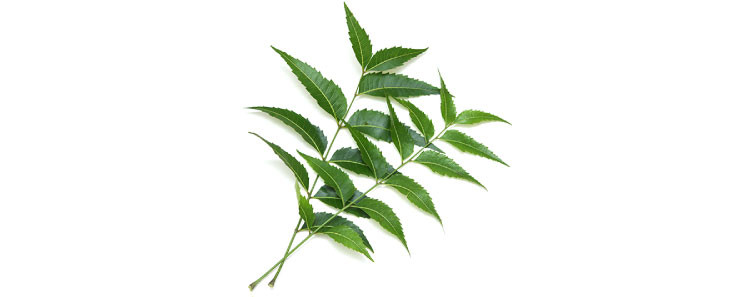
How to use it:
- Traditionally, neem leaves are crushed in a mortar or pot and water is added to it to make a paste. This is applied directly to wounds and other skin conditions.
- People also hang neem leaves at the door or near the bed of patients with flu or fever because of its antibacterial and antiviral properties. It is believed that the spread of diseases is contained as the air is purified by these neem leaves, which act as disinfectants.
- Neem leaves are crushed in a pot. Water is added to it and the pot is covered. This mixture is allowed to steep for 2-3 days. Then, with a strainer, the liquid concentrate is separated from the leaves. To this, concentrate, soap is added and this can be used as a pesticide spray.
- You can also try a home-made neem pack for your hair. Grind the neem leaves with a little water; boil it on a pan to make a consistent paste. Allow it to cool. Apply it to your scalp after shampooing your hair. Wash it off after 30 minutes. Try this twice a week for best results!
IV. Uses of neem oil
Neem oil is derived by crushing neem seeds. You can also prepare it with the help of neem leaves.
How to make neem oil at home:
(a) Take a few sprigs of neem and tulsi (basil) leaves. Wash well and dry.
(b) Mix with a little water (just enough to help grind) in a blender and keep the paste aside.
(c) In another pan, warm some coconut or sesame oil, the base for preparing neem oil.
(d) Add the paste in the oil and keep over a low flame for 15-20 minutes, allowing the oil to be absorbed by the neem paste.
(e) Remove from the flame and cool for 2 hours.
(f) Strain the mixture.
(g) Keep the neem oil in a closed container free from moisture.
Like the leaves, neem oil is used to treat skin problems.
- It is especially effective in treating head lice and dandruff.
- The purifying nature of neem leaves makes it useful for aromatherapy.
Medicinal uses of neem oil:
1. Skin conditions
(i) Is acne embarrassing you? Do you suffer from psoriasis, eczema, ringworm, and stubborn warts? Neem oil is remarkably effective in getting rid of these skin conditions.
(ii) It is also an essential element in cosmetics. Neem oil is known to help rejuvenate and beautify your skin.
Note: If you are using store-bought neem oil, ensure that you use high-quality neem oil.
2. Haircare
This can help get rid of dandruff. It also helps in the growth of thicker and stronger hair. So, if you are suffering from hair loss, neem oil is an effective remedy.
How to do it:
Apply neem oil to your scalp and gently massage. Leave it for about 30 minutes. Wash your hair with shampoo and conditioner.
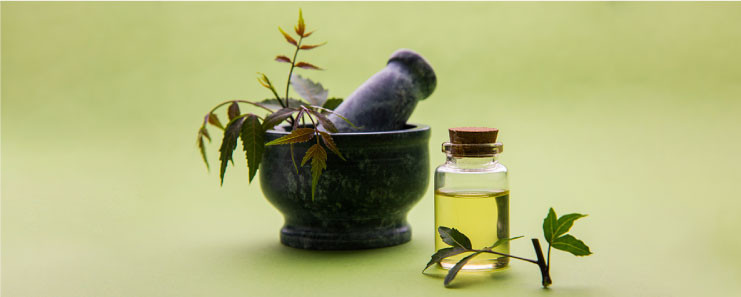
3. Digestive disorders
If you are among those who suffer from gastric problems like ulcers, neem can help ease the pain by removing toxins in the body.
You can make juices from neem flowers or add the leaves in drinks such as aamras (mango juice) to enjoy the benefits of neem.
4. Parasitic diseases
Neem extracts have the ability to destroy parasites – internal and external, as they have hormone mimics. These don’t allow the eggs of the parasite to hatch also preventing their ability to feed.
Apart from these, the effects of neem on the immune system are unparalleled, as it has great antioxidant properties. So, if you haven’t done it already, include neem in your life to enjoy its various benefits.
This valuable tree has rightly been declared the “Tree of the 21st century” by the United Nations. Because of its various uses and applications, neem is considered the Indian villager’s friend and protector.
You can read more about Ayurvedic herbs and their benefits here.
If you would like to delve deeper into better health, to make your body and mind strong, you could explore the Wellness Program here.
Written with inputs from Dr. Anjali Asok, Ayurveda physician, Faculty, Art of Living



